Essential Guide to Sheeting types for hsbWalls (hsbcad 2017)
This document will show you the different sheeting types in the hsbWalls in the hsbWall Details.
If you want to return to the original document How to make hsbWall Details in hsbcad 2017
When using the Full
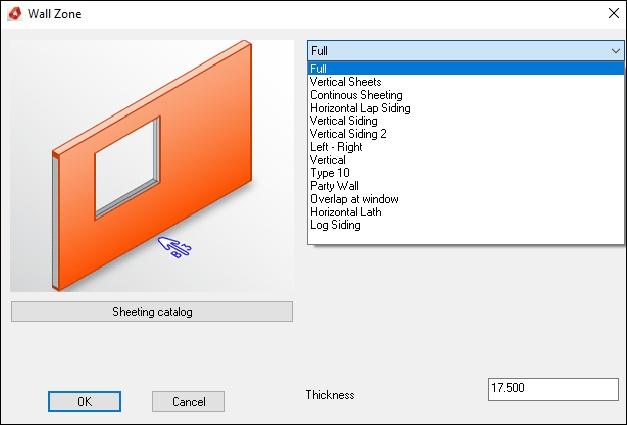
- Select the Full sheeting option in the pull down menu.
Thickness – This is the thickness of the sheet which can be changed here. The only way to change the thickness value and ensure that sheets meet at connections properly is to modify the wall detail library.
When using the Vertical sheets

- Select the Vertical sheets option sheeting in the pull down menu.
Material – Enter the name for the sheeting material.
Colour – Select the colour that you want the sheet to appear in.
Width – Enter the width you want the sheets to be.
Gap – Specify the horizontal gap (distance between sheet and next sheet to the right or left).
BLOCK_WARNING_START
IMPORTANT: when using a gap, add the value onto the sheeting otherwise this will be subtracted from the sheeting.
For example: you have a sheet of 1200 and a gap of 20 your sheeting should be 1220 and enter 20 in the gap
BLOCK__END
First Sheet– You can enter a width for the first sheet of the wall.
Height Sheet– Enter a height for the sheet
Blocking – Turn on this setting if you want blocking (noggins) between the sheet and the next sheet above it.
Vertical Gap‐ Specify the vertical gap (distance between sheet and next>sheet to the top).
Thickness – This is the thickness of the sheet which can be changed here but might result in sheets overlapping. The only way to change the thickness value and ensure that sheets meet at connections properly is to modify the wall detail library.
You can select predefined Sheeting in the Sheeting catalog.

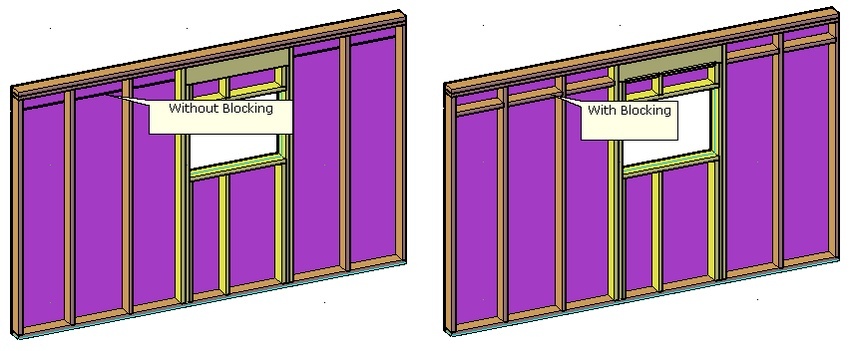
When using the Continuous Sheeting
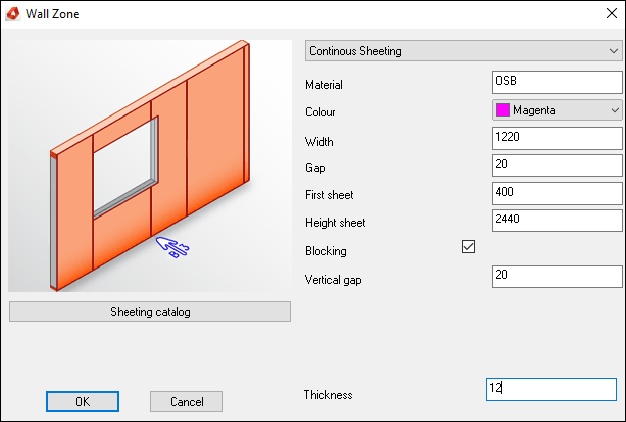
- Select the Continuous Sheeting option sheeting in the pull down menu.
Material– Enter the name for the sheeting material.>
Colour– Select the colour that you want the sheet to appear in.
Width– Enter the width you want the sheets to be.
Gap– Specify the horizontal gap (distance between sheet and next sheet to the right or left).
BLOCK_WARNING_START
IMPORTANT: when using a gap, add the value onto the sheeting otherwise this will be subtracted from the sheeting.
For example: you have a sheet of 1200 and a gap of 20 your sheeting should be 1220 and enter 20 in the gap
BLOCK__END
First Sheet– You can enter a width for the first sheet of the wall.
BLOCK_WARNING_START
IMPORTANT: Make sure the No Split isn’t checked in the wall detail dialog box. If you want 2 different sheeting zones to be staggered.
BLOCK__END
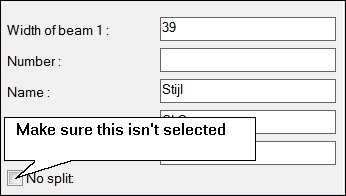
Height Sheet – Enter a height for the sheet.
Blocking– Turn on this setting if you want blocking (noggins) between the sheet and the next sheet above it.
Vertical Gap ‐ Specify the vertical gap (distance between sheet and next sheet to the top).
Thickness– This is the thickness of the sheet which can be changed here but might result in sheets overlapping. The only way to change the thickness value and ensure that sheets meet at connections properly is to modify the wall detail library.
You can select predefined Sheeting in the Sheeting catalog.
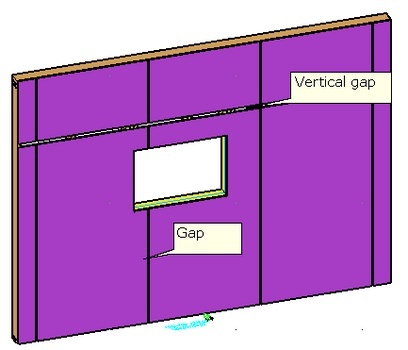

When using the Horizontal Lap Siding
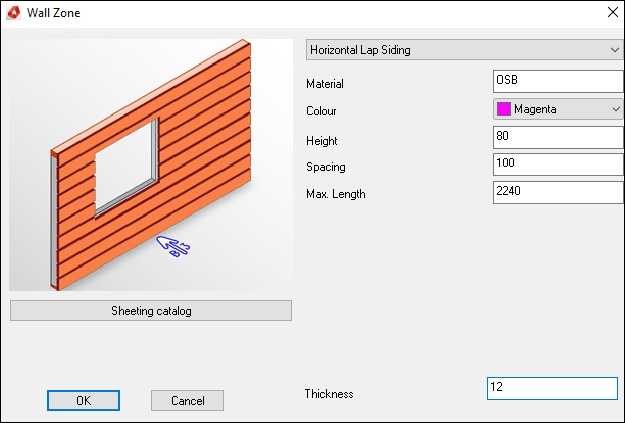
- Select the Horizontal Lap Siding option sheeting in the pull down menu.
Material – Enter the name for the sheeting material.
Colour – Select the colour that you want the sheet to appear in.
Height – Enter the Height you want the sheets (beams) to be.
Spacing – Enter a value for the spacing (Horizontal gap). Height + gap=spacing.
BLOCK_WARNING_START
IMPORTANT: when using a spacing add the value onto the sheeting (beams) otherwise this will be subtracted from the sheeting (beams).
For example: you have a sheet(beams) of 80 and a gap of 20 your sheeting (beams) should be 100 and enter 20 in the Spacing.
BLOCK__END
Max Length– Enter the max. Length of the sheets (Beams)
Thickness – This is the thickness of the sheet which can be changed here but might result in sheets overlapping. The only way to change the thickness value and ensure that sheets meet at connections properly is to modify the wall detail library.
You can select predefined Sheeting in the Sheeting catalog.
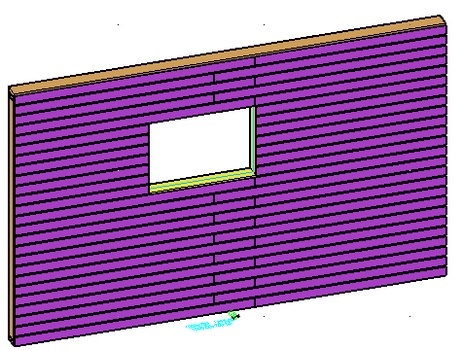
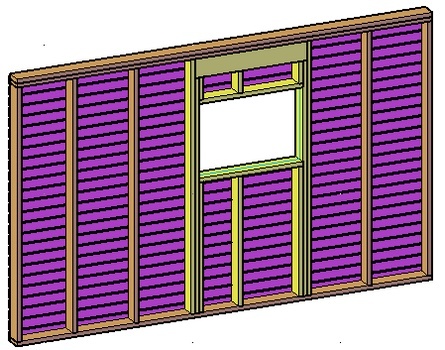
When using the Vertical Siding
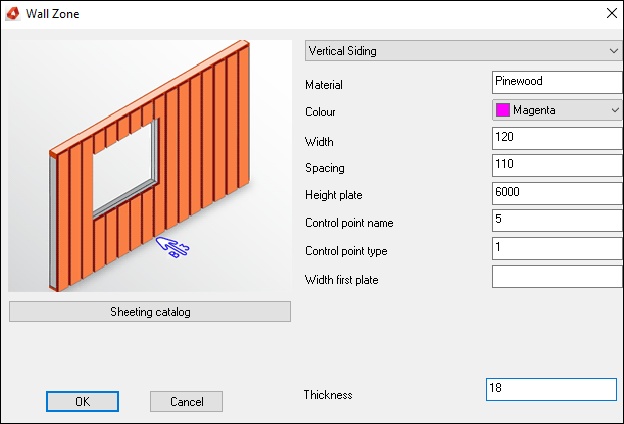
- Select the Vertical Siding option sheeting in the pull down menu.
Material– Enter the name for the sheeting material.
Width– Enter the width you want the sheets to be.
Spacing– Enter a value for the spacing (Horizontal gap). Height + gap=spacing
BLOCK_WARNING_START
IMPORTANT: When using spacing, add the value of the sheet+the gap you have a sheet of 150 and a gap of 50 your spacing should be 200.
BLOCK__END
Height plate- Enter a height for the sheet.
Control point name– Enter the name of the Control point you have used. (In this case it’s 5). Don’t forget to put the Control point in the Group (hsbConsole) you are using.
Control point type– Enter 0 or 1, if you use O this will center the sheet, if you use 1 this will place the sheets from the side.
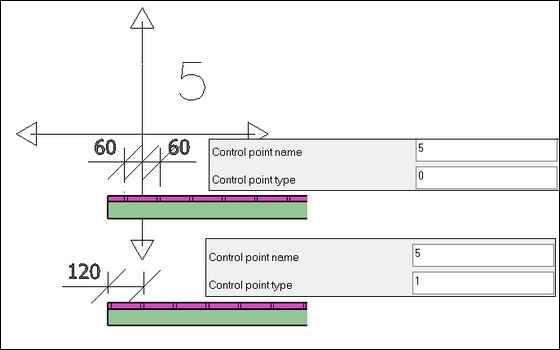
BLOCK_WARNING_START
Make sure the distribution point is in the same group as the hsbWalls (hsbConsole). Otherwise it will not work.
BLOCK__END
BLOCK_ALERT_START
NOTE: If the Distribution point symbol seems to be too big, this has something to do with the units.
BLOCK__END
Tickness – This is the thickness of the sheet which can be changed here but might result in sheets overlapping. The only way to change the thickness value and ensure that sheets meet at connections properly is to modify the wall detail library.
You can select predefined Sheeting in the Sheeting catalog.
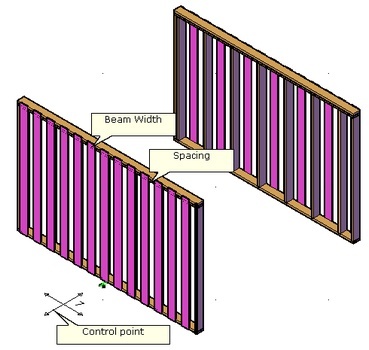
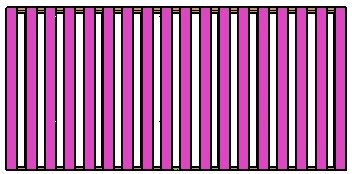
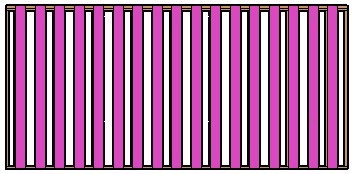
BLOCK_WARNING_START
NOTE: If the Distribution point symbol seems to be too big, this has something to do with the units.
BLOCK__END
1. Remove the Distribution point symbol out of your drawing.
2. Purge the drawing.
3. Type ‘units’ in the command line. This will open the ‘drawing Setup’ dialog box.
4. Uncheck the ‘Scale Objects inserted from other drawings’.
5. Insert the Distribution point symbol again.

When using the Vertical Siding2
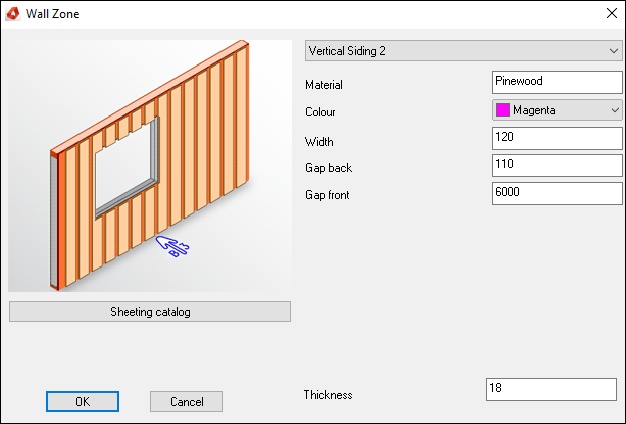
- Select the Vertical Siding option sheeting in the pull down menu.
Material– Enter the name for the sheeting material.
Colour– Select the colour that you want the sheet to appear in.
Width– Enter the width you want the sheets to be.
Gap back– Enter a value for the Back gap.
Gap front– Enter a value for the Front gap.
Thickness– This is the thickness of the sheet which can be changed here but might result in sheets overlapping. The only way to change the thickness value and ensure that sheets meet at connections properly is to modify the wall detail library.
You can select predefined Sheeting in the Sheeting catalog.
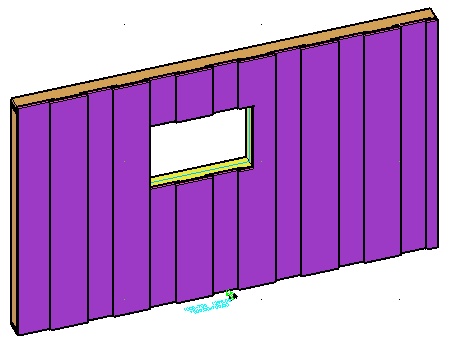
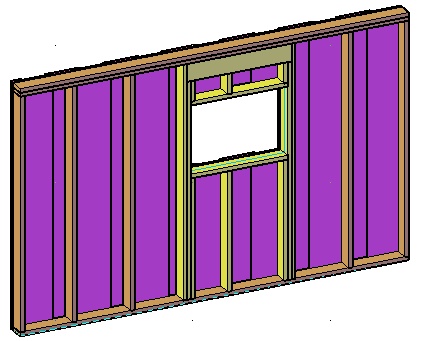

When using the Left-Right
- Select the Left-Right option sheeting in the pull down menu.
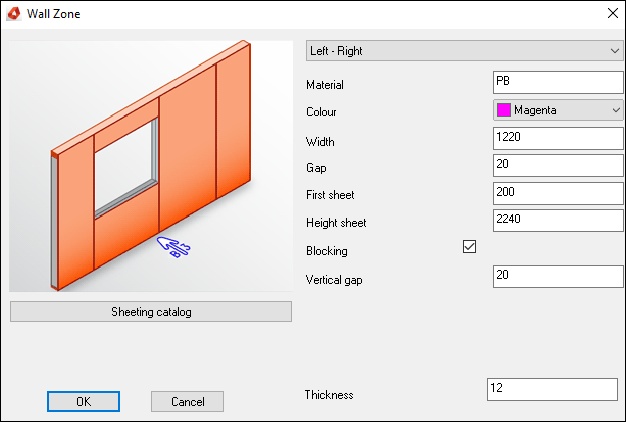
Material – Enter the name for the sheeting material.
Colour– Select the colour that you want the sheet to appear in.
Width– Enter the width you want the sheets to be.
Gap– Specify the horizontal gap (distance between sheet and next sheet to the right or left).
BLOCK_WARNING_START
IMPORTANT: When using a gap, add the value onto the sheeting otherwise this will be subtracted from the sheeting. (For example: you have a sheet of 1200 and a gap of 20 your sheeting should be 1220 and enter 20 in the gap).
BLOCK__END
First Sheet– You can enter a width for the first sheet of the wall.
Height Sheet– Enter a height for the sheet
Blocking – Turn on this setting if you want blocking (noggins) between the sheet and the next sheet above it.
Vertical Gap‐ Specify the vertical gap (distance between sheet and next sheet to the top).
Thickness– This is the thickness of the sheet which can be changed here but might result in sheets overlapping. The only way to change the thickness value and ensure that sheets meet at connections properly is to modify the wall detail library.
You can select predefined Sheeting in the Sheeting catalog.
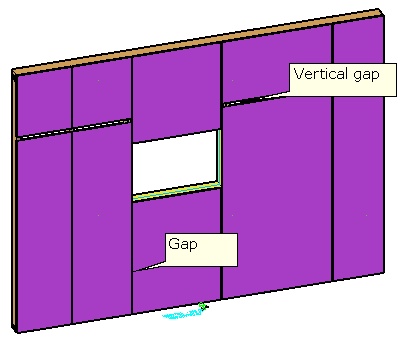
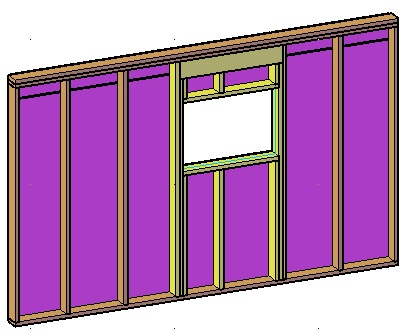
When using the Vertical

- Select the Vertical option sheeting in the pull down menu.
Material– Enter the name for the sheeting material.
Colour– Select the colour that you want the sheet to appear in.
Thickness– This is the thickness of the sheet which can be changed here but might result in sheets overlapping.
The only way to change the thickness value and ensure that sheets meet at connections properly is to modify the wall detail library.
You can select predefined Sheeting in the Sheeting catalog.
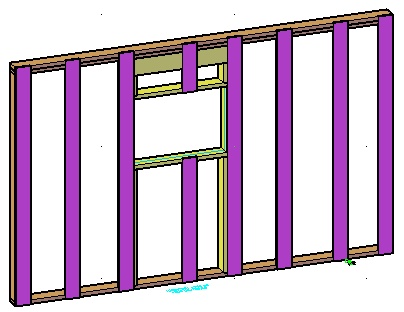
Example:Vertical front side
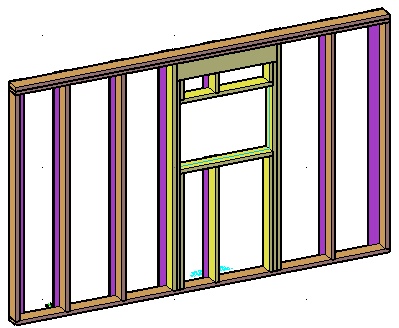
When using the Type 10
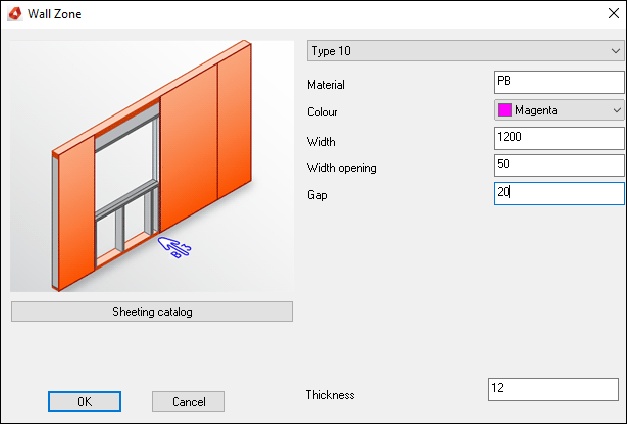
- Select the Type 10 option sheeting in the pull down menu.
Material– Enter the name for the sheeting material.
Colour– Select the colour that you want the sheet to appear in.
Width– Enter the width you want the sheets to be.
Width opening– Enter a value for the opening. (This will make an extra space between the window/Opening and the sheeting). (In this case we have made a width opening of 50 and a gap of 20, the space between the sheeting and the opening is now 70mm)
Gap– Specify the horizontal gap (distance between sheet and next sheet to the right or left).
Thickness– This is the thickness of the sheet which can be changed here but might result in sheets overlapping.
The only way to change the thickness value and ensure that sheets meet at connections properly is to modify the wall detail library.
You can select predefined Sheeting in the Sheeting catalog.
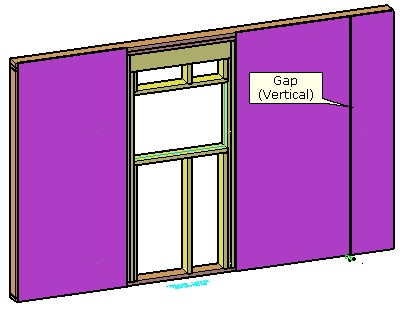
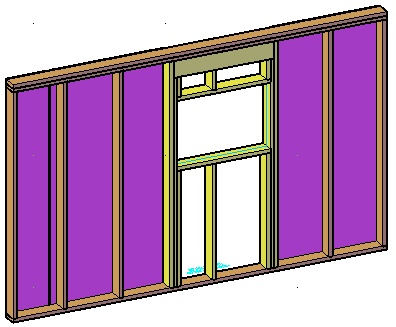
When using the Party wall
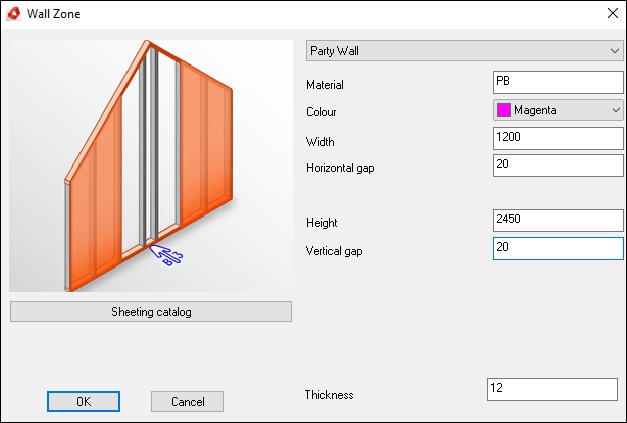
- Select the Party wall option sheeting in the pull down menu.
Material – Enter the name for the sheeting material.
Colour – Select the colour that you want the sheet to appear in.
Width – Enter the width you want the sheets to be.
Horizontal Gap – Specify the horizontal gap (distance between sheet and next sheet to the right or left).
Height – Enter a height for the sheet.
Vertical gap – Specify the vertical gap.
Thickness – This is the thickness of the sheet which can be changed here but might result in sheets overlapping.
The only way to change the thickness value and ensure that sheets meet at connections properly is to modify the wall detail library.
You can select predefined Sheeting in the Sheeting catalog.

Example: Party wall front side

When using the Overlap at window
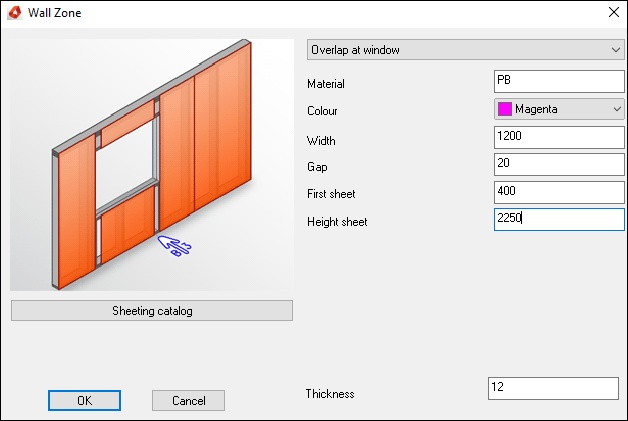
- Select the Overlap at window option sheeting in the pull down menu.
Material– Enter the name for the sheeting material.
Colour– Select the colour that you want the sheet to appear in.
Width– Enter the width you want the sheets to be.
Gap– Specify the vertical gap.
Height– Enter a height for the sheet.
First sheet– Enter a value for the First sheet.
Height sheet– Enter a value height for the sheet.
Thickness– This is the thickness of the sheet which can be changed here but might result in sheets overlapping.
The only way to change the thickness value and ensure that sheets meet at connections properly is to modify the wall detail library.
You can select predefined Sheeting in the Sheeting catalog.
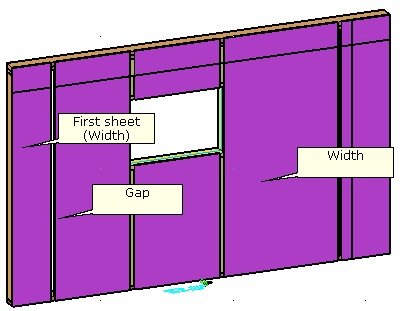

When using the Horizontal lath
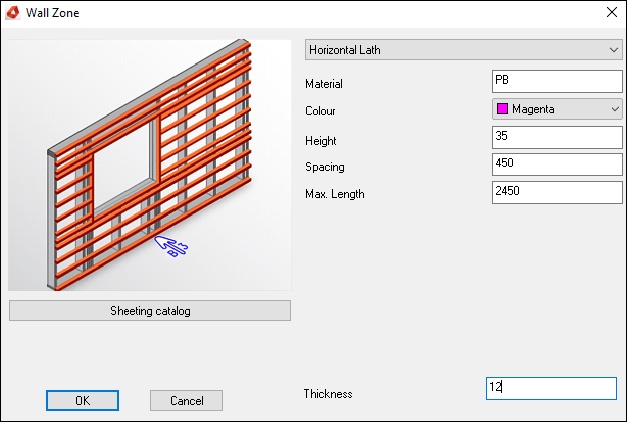
- Select the Horizontal lath option sheeting in the pull down menu.
Material – Enter the name for the sheeting material.
Colour – Select the colour that you want the sheet to appear in.
Height – Enter a height for the sheet (Lath)
Spacing – Enter a value for the spacing (Center‐Center of the Laths)
Max. Length – Enter a value for the max.Length of a Lath.
Thickness – This is the thickness of the sheet which can be changed here but might result in sheets overlapping. The only way to change the thickness value and ensure that sheets meet at connections properly is to modify the wall detail library.
You can select predefined Sheeting in the Sheeting catalog.

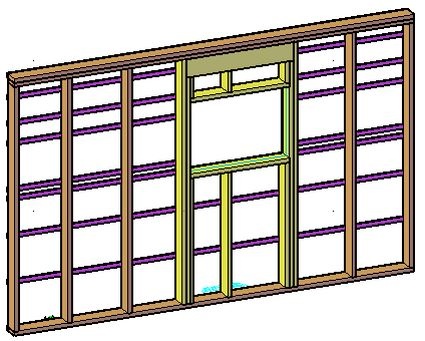
When using Log Siding

- Select the Log Siding option sheeting in the pull down menu.
Material – Enter the name for the sheeting material.
Colour – Select the colour that you want the sheet to appear in.
Height – Enter a height for the sheet.
Tongue height – Enter a value for the Tongue height.
Max. Length – Enter a value for the max. Length of a log.
First log height – Enter a value for the first log height.
Thickness – This is the thickness of the sheet which can be changed here but might result in sheets overlapping. The only way to change the thickness value and ensure that sheets meet at connections properly is to modify the wall detail library.
You can select predefined Sheeting in the Sheeting catalog.
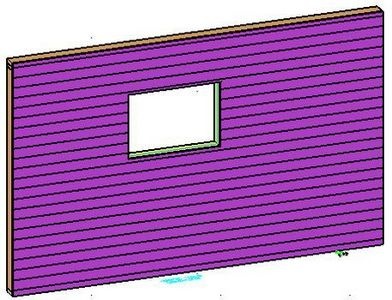
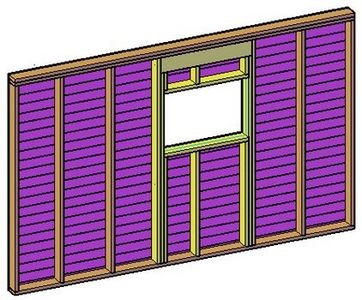
BLOCK_CHECK_START
If you want to return to the original document How to make hsbWall Details in hsbcad 2017
BLOCK__END

